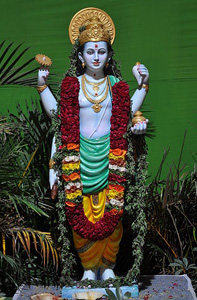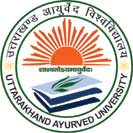The true history of ayurved starts from the time of the Holy books, the Vedas. Ancient mythology contends that the concept and essence of ayurved was revealed by the creator of the world himself - Lord Brahma.
There are four Vedas, which are Rigveda, Yajurveda, Samaveda and Atharvaveda. The Vedas date back to about five thousand years. They preach the philosophy of life. The Atharvaveda contains the principles of healing on which ayurved is based. 'Ayur' means 'life' in Sanskrit. ayurved is the most ancient science of healing which enhances longevity. It has influenced many of the older traditional methods of healing including Tibetan, Chinese and Greek medicine. Hence, ayurved is considered by many as the 'mother of healing.'
Aryavarta, the native land of Aryans, covers a large area surrounding the Himalayas and is believed to be the place where the Rishis and Munis lived. At present it covers areas in countries like Nepal, India, Pakistan, Bhutan and Tibet. The civilizations of these countries are deeply influenced by the unique intellectual contributions of these Rishis and Munis.
The practical tenets of Ayurveda are divided into eight sections or branches. These sections include the following:
- Kaya Chikitsa – Internal medicine & therapeutics (Healing and detoxifying measures).
- Shalya Chikitsa – Surgery (Extraction of foreign bodies/ things that cause discomfort to the body and the mind).
- Shalakya (Urdhvanga) Chikitsa – ENT, Opthalmology (Treatment of eyes, ears, nose, throat and head).
- Bala (Kaumar-Bhritya) Chikitsa – Paediatrics, Gynaecology-Obsterics (pregnant ladies & babies)
- Rasayana (Jara) Chikitsa – Gerontology (Care of the elderly and Rejuvenation therapy)
- Vajikarana (Vrishya Chikitsa) – Sexology (acquiring virile strength) (Aphrodisiacs)
- Bhoot Vidya (Graha Chikitsa) – Spiritual therapy, Psychiatry (Psychiatry Medicine)
- Visha Chikitsa (Agad tantra) – Toxicology (antidotes to poisons)
Ayurved is a complete or holistic system that integrates the mind, body and spirit. For a few centuries, the tradition of ayurved was dimmed due to the natural and human calamities and also by the invasion of foreign cultures into India. The sacred texts were either destroyed or stolen. However there were many 'Vaidyas' or doctors in India who managed to preserve some of the knowledge available in these Holy Scriptures. Divine plants that sustain long life and good health are now being rediscovered. Many renowned families of Vaidyas, who are specialized in certain branches of ayurved, have started functioning again in India. Today there is a revival of the ancient culture and traditions inherent to ayurved, which is a true gift of the ancient civilization to the modern world.
Quality of a Good Physician

(Lord of Medicine)
The physician who has acquired the six attainments viz., the knowledge of the science of medicine, critical scientific reasoning, deep insight in allied sciences, memory, promptness in action and perseverance seldom fails to achieve his objective (viz., the protection, promotion and preservation of the health in the healthy and the alleviation of disease in the afflicted).
He is entitled to the title 'Vaidya' who has any one or the other of the following:
Knowledge (of the science of medicine), intellect, keen interest in his work, success in practice (of medicine) and the guidance of a senior (an experienced physician).
One who possess (all) the aforesaid attainments deserves to be called the best Vaidya. He becomes the benefactor of humanity.
Science is light and it illuminates. One’s own intellect is vision. One who applies both (science and intellect) seldom errs.
'Acharya Charak'
